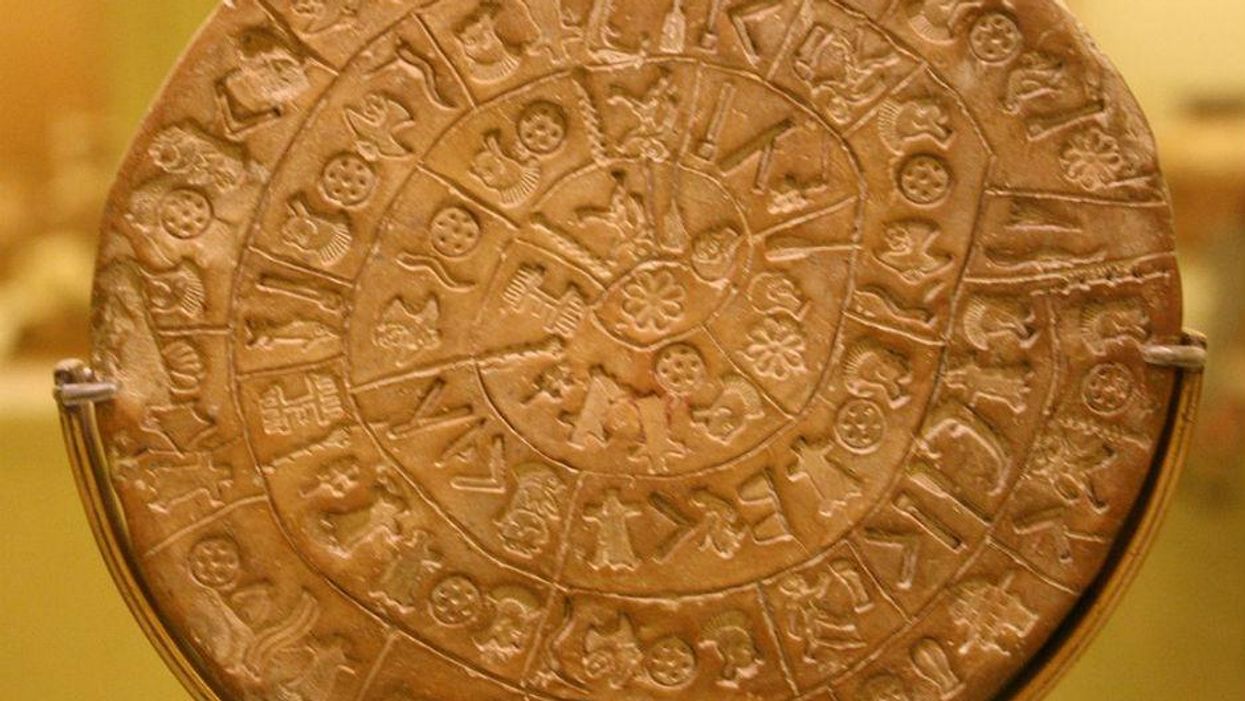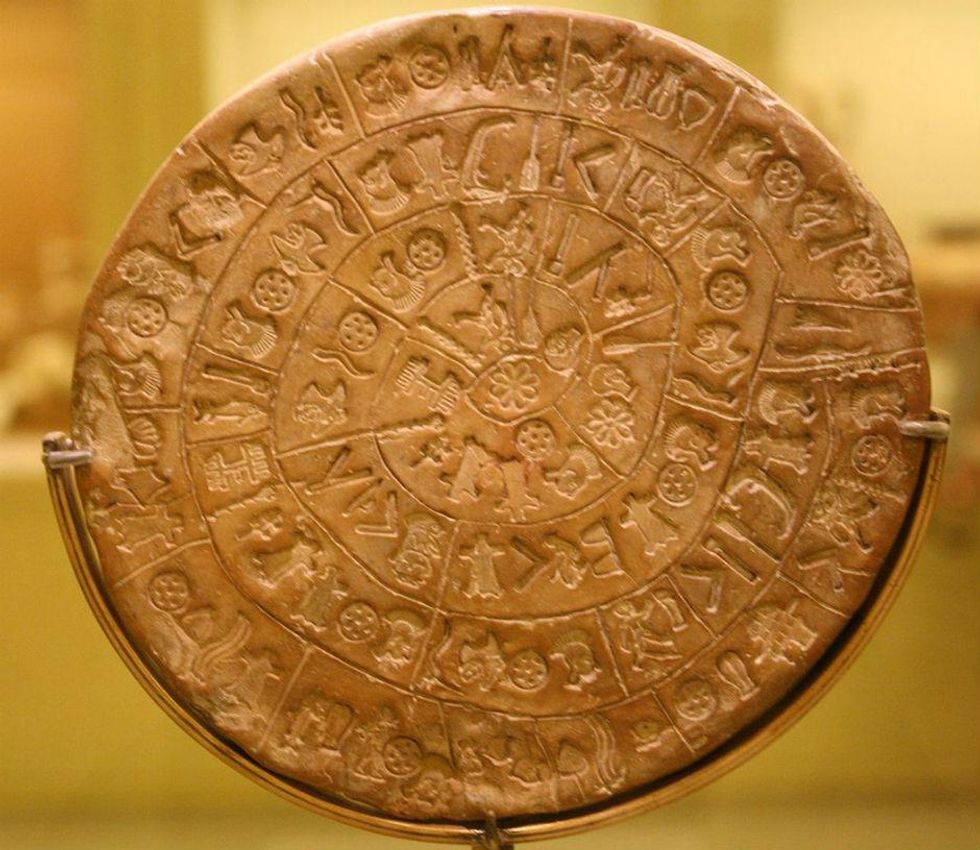News
Evan Bartlett
Oct 29, 2014

The hieroglyphs on an ancient disc found in modern day Crete have left archaeologists and linguistics experts stumped for years... until now.
Dr Gareth Owens, of the Technological Educational Institute (TEI) of Crete, believes that after six years of hard work involving a team of international scholars most of the mysterious words on the "Phaistos Disc" have been decoded.
The clay disc was discovered in a palace on the island of Crete in 1908 but is estimated to date back to around 1,700 BCE, according to Discovery News.
Dr Owens believes the disc, which is said to possess 242 picture segments created from 45 individual symbols, represents a prayer to a Minoan "mother goddess".
Cretan hieroglyphs are one of two ancient Minoan languages that are largely yet to be deciphered - the other being known as Linear A.
The languages are believed to be the origins of Linear B, which was later used by the Mycenaean civilisation - the earliest known form of ancient Greek. The decipherment of Linear B added seven centuries of knowledge to the history of the Minoan script and language.
Here is Dr Owens speaking at a TedX event in May, talking about his quest to decipher the ancient scripts and the disc itself...
More: A new dinosaur has been discovered and it's really, really big
Top 100
The Conversation (0)













